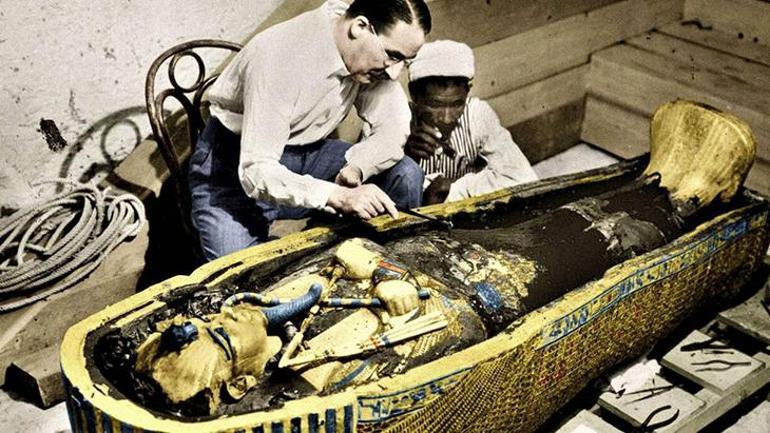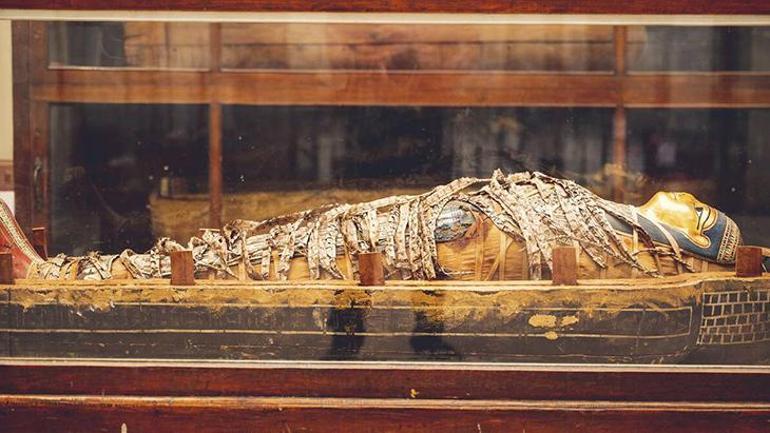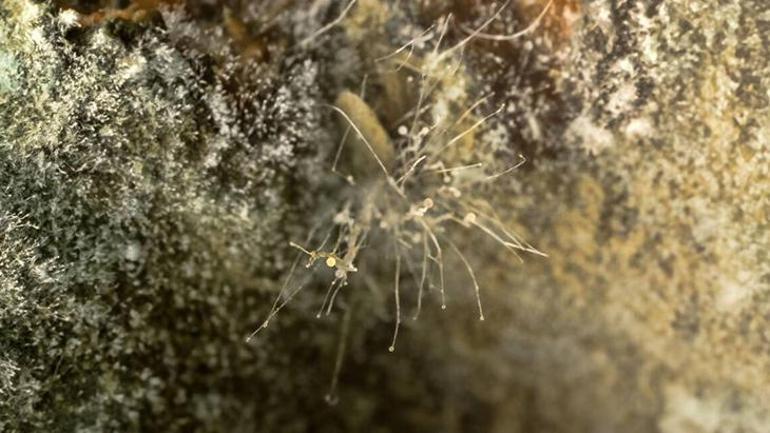Could the 'mummy's curse' stop cancer? Deadly fungus targets cells

Betül Yasemin Keskin / Milliyet.com.tr - If you've ever seen a mummy movie set in Egypt, you're likely familiar with the concept of the " mummy's curse ." This mysterious curse, believed to have occurred particularly with the opening of pharaohs' tombs, is associated with illness, disaster, and sudden death. This legend gained worldwide fame in 1922 when British archaeologist Howard Carter discovered the tomb of King Tutankhamun in Cairo. The fact that some members of the team who opened the tomb soon became ill or died further fueled rumors of a "pharaoh's curse." However, scientists have argued that these events stem from biological, not supernatural, causes.
Certain fungal species, isolated in tombs for centuries, are known to secrete dangerous toxins. One of these, Aspergillus flavus , can cause serious respiratory problems and even death when inhaled. However, the situation has now turned around. Recent scientific studies have revealed that this deadly fungus can also be a powerful ally in the fight against cancer. Laboratory studies of Aspergillus flavus have been observed to stop the growth of certain cancer cells, particularly leukemia . So, is a "curse" feared for centuries now being used in medicine? Can Aspergillus flavus cure cancer?

Uncontrolled cell growth has stopped
A new study conducted by scientists at the University of Pennsylvania and published in the academic journal Nature Chemical Biology suggests that the fungus Aspergillus flavus may be effective in stopping cancers like leukemia. The research team isolated and purified a new class of molecules derived from the fungus, asperigimycins, and tested them on common cancers such as breast, liver, and lung cells. Two of the four asperigimycin molecules used in the experiment showed a potent effect on the leukemia cells, even without any modification.
In subsequent studies, researchers found that these molecules, created and modified within the fungus's cellular mechanism, inhibited some mechanisms of cell division and stopped the uncontrolled cell growth that causes cancer.
The University of Pennsylvania team, which also included researchers from Rice University, the University of Pittsburgh, the University of Texas, Washington St. Louis University, Baylor College of Medicine, and the University of Porto, noted that their research focusing on the fungus Aspergillus flavus is unique because it focuses on a class of peptides more commonly studied in bacteria than fungi.

'FUNGI GAVE US PENICILLIN'
" Mushrooms gave us penicillin ," said Associate Professor Sherry Gao, who works in the field of chemical and biomolecular engineering and bioengineering at the University of Pennsylvania, adding that their results show that many more drugs derived from natural products are waiting to be discovered.
Aspergillus flavus, commonly found in soil, is known to cause lung infections, particularly in people with weakened immune systems, and to infect various agricultural products. We spoke with Radiation Oncology Specialist Dr. Tayfun Hancılar about this fungus, known for years as the "mummy's curse," and this promising cancer research.
THE SCIENTIFIC TRUTH BEHIND THE CURSE
Radiation Oncology Specialist Dr. Tayfun Hancılar began his explanation by introducing the fungus Aspergillus flavus , saying, " Aspergillus flavus thrives in damp, enclosed, and dark spaces. The enclosed and moist interiors of mummy tombs provide an ideal environment for fungal growth. The decay of the materials used in mummification creates a suitable breeding ground for these fungi. The curses that plagued those who opened the famous pyramids are actually related to inhaling this fungus ."
Aspergillus flavus, a common fungus found in soil, is known to cause lung infections, particularly in individuals with weakened immune systems, and to infect various agricultural products. How can this fungus, known to be one of the most frequently isolated mold species in agriculture and medicine, both threaten human health and save lives? Radiation Oncology Specialist Dr. Tayfun Hancılar clarified this issue:
QUOTE - "We see that substances that are toxic in humans are beneficial in laboratory experiments. For example, there's a substance we call 'paclitaxel,' derived from the bark of the yew tree. If a person were to consume this bark alone, they could face serious health problems. However, in cancer research, we see that the active ingredients of paclitaxel are isolated and produced. Just as we saw in the paclitaxel example, aspergillus flavus can cause lung infections in normal individuals, but these can be beneficial in laboratory experiments."

'MORE WORK IS NEEDED'
Dr. Hancılar stated that one of the most common misconceptions in cancer-related studies is that some cultures show good results in laboratory cell tests. He added, "If a virus or fungus only shows an effect on cancer cells in the laboratory, we shouldn't interpret this as hope. Findings obtained from Aspergillus flavus may produce results on many cancer cells, such as leukemia, in the laboratory, but they may not yield the expected results in animal or human studies ."
Dr. Hancılar stated that everyone believes cancer can be eliminated with simple methods, saying, " However, cancer is a very complicated disease. Destroying cancer with a simple drug may not be easy. We hope that an effective drug substance can be created from Aspergillus flavus, but it's not appropriate to comment on this at this time. It would be wise to investigate every promising finding about cancer."
milliyet



